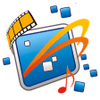Provides media resources computer other UPnP (DLNA) devices in the home network
Provides media resources computer other UPnP (DLNA) devices in the home network
Vote: (18 votes)
Program license: Trial version
Developer: Evgeny Lachinov
Version: 3.20
Works under: Windows
Vote:
Program license
(18 votes)
Trial version
Developer
Version
Evgeny Lachinov
3.20
Works under:
Windows
Pros
- Extensive device compatibility with DLNA and UPnP standards
- Advanced media transcoding capabilities
- Integration with online media databases for metadata retrieval
- Customization options for media resource structure
- Supports streaming to multiple devices concurrently
Cons
- May have a learning curve for new users due to extensive features
- Advanced customization may require scripting knowledge
Effortlessly Stream Your Media to Any Device
Wild Media Server (UPnP, DLNA, HTTP) is a versatile software solution designed for those wanting to share and stream multimedia content across a range of devices within the home network. Being compatible with a variety of UPnP and DLNA-certified devices such as smart TVs from LG, Philips, Sony, Samsung, game consoles like Sony PlayStation 3 and Xbox 360, as well as mobile gadgets, Wild Media Server stands out as a comprehensive media server tool.
The utility goes beyond simple media sharing by incorporating powerful transcoding capabilities. This means it can seamlessly convert audio and video files into formats that are compatible with the playback device you are using. It effortlessly handles various media types, ensuring that your content can be enjoyed without worrying about file format constraints.
Advanced Transcoding and Customization Features
With Wild Media Server, not only can you transcode media to fit the device specifications, but you can also tailor the aspect ratio of video files to match your screen, select specific audio tracks, and enable subtitles. Transcoding can be initiated from any point within the media file, offering a high degree of control and flexibility.
One of the software's strong suits is its ability to utilize transcoding profiles from the VLC Media Player. This extends its capabilities, allowing you to stream both Internet radio and TV streams to your devices, effectively integrating with your digital entertainment setup.
For those needing to send Digital Video Broadcasting (DVB) streams from a PC to other media devices, Wild Media Server provides this functionality, enhancing its appeal to a broader user base.
Device Compatibility and Dynamic Folder Structures
The software provides more than just static media sharing; it supports customizing the structure of media resources for every connected device. Moreover, dynamic folders can be created with scripts, injecting flexibility and adaptability into how content is organized and accessed.
Integration with Online Databases and Multilanguage Support
To enrich the user experience, Wild Media Server integrates with online movie databases such as IMDB, TheMovieDB, and TheTVDB.com. This feature allows for automatic retrieval of media metadata, thus simplifying the organization and categorization of your media library.
The software also touts a user-friendly interface that supports an automatic translation system through services like Google Translate and Microsoft Translate, making it accessible for a global user base with diverse language preferences.
Control and Streaming to Multiple Devices
Notably, Wild Media Server supports Digital Media Renderer (DMR) devices, enabling users to control and stream content with the "Play to" feature to single or multiple devices simultaneously. This capability underscores the software's focus on providing a user-centric streaming experience that is both comprehensive and convenient.
In Summary
Wild Media Server (UPnP, DLNA, HTTP) excels as a multimedia streaming solution that caters to a broad spectrum of devices within a home network. Its flexibility, enhanced by powerful transcoding features and customization options, makes it a competitive choice for those seeking a reliable and versatile media server.
Pros
- Extensive device compatibility with DLNA and UPnP standards
- Advanced media transcoding capabilities
- Integration with online media databases for metadata retrieval
- Customization options for media resource structure
- Supports streaming to multiple devices concurrently
Cons
- May have a learning curve for new users due to extensive features
- Advanced customization may require scripting knowledge




